After recently attending a CPD course about ‘Smart Home Technology’ held by Cedia, it inspired us to look into ways that we could incorporate this into a current project.
They talked about a few different ways and systems that can be integrated within the home in order to be more efficient and gain more control. Lots of these systems we thought would work extremely well for this current project, however there was a number of drawbacks which meant they would not be suitable.
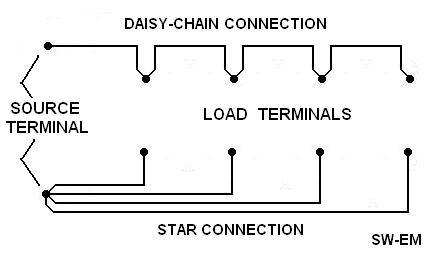
Source: SW-EM
The first thing that we were informed about was the basis which it all runs from. This is a central location within the house where all wires, systems ect. run to. In most houses there is what is called daisy chain wiring. This is where a wire will run through each component to reach the next one. This is not a good way of wiring, as, if there is a fault in one of the earlier components in the chain, it will effect the end ones also (much like dominos). It also means that the connection weakens as it gets further down the chain. To avoid this star connections should be used, where each component has a separate wire leading back to the central point. This also opens up endless possibilities in controlling things separately.
Although this is something that we were already aware of, this added knowledge means that we will now ensure that all the wiring is done in this way.
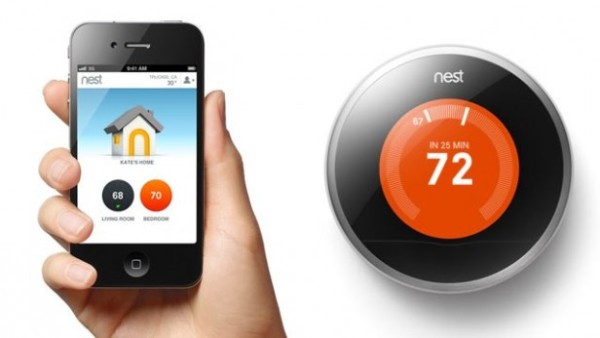
Source: Trusted Reviews
One of the main systems that they were pitching to us was ‘Nest‘ which offers a thermostat and smoke alarm with a difference. Nest products take these every day systems and push them to the next level. The thermostat has an app which it connects with allowing you to control the heating from everywhere with a wifi or data connection, as well as being able to control it from the stylish thermostat itself. It also allows you to set the temperate to an exact degree and set schedules. Another awesome feature is that it senses when no one is home and so automatically turns off the heating due to the motion sensors (which are also installed in the smoke alarms). It also allows you to view your history and learns your habits, with a green feature telling you when you’re saving energy.
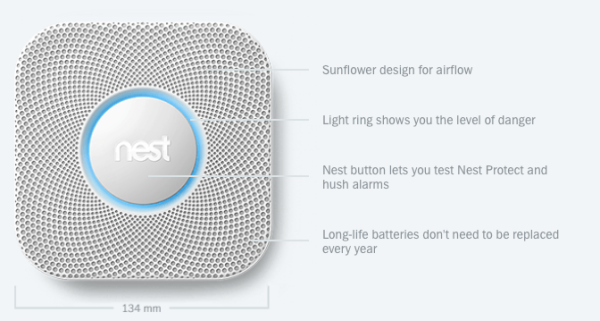
Source: Mac Sparky
The Nest Protect is a smart smoke/carbon monoxide protector. Instead of making an annoying beep, it notifies you through speech when it picks up of a threat before setting off the full alarm, which you can ‘hush’ through simply waving, or through the Nest app. It uses colour as well as sound to notify people which is great for people with hearing impairments. Furthermore, every alert is sent to your phone through the app so you can be notified of a problem in another room or the home when you’re not there, and each alarm can be named so you know what room it is in. As previously mentioned, it has motion sensors included which work with the thermostat to tell it when you’re home, but it also acts as a night light at night projecting a soft white light. All very safe, and whats more, it even tells you when its batteries are low through speech and an app notification rather then that famously irritating beep.
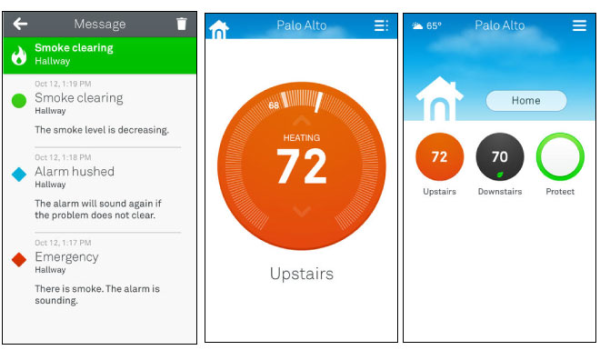
Source: Apple Insider
The Nest protect is one thing that we would recommend to our client. However, as the thermostat does not work with underfloor heating, we are unable to incorporate this into our design. This is the one downside to Nest. It is an attractive, innovative, easy to use advance in technology that everyone renovating/building a house should look into. But, it does come with the huge downside of not being compatible with underfloor heating, of which is becoming increasingly popular. Underfloor heating is a fabulous invention, as it works with the theory of heat rising while giving you added comfort of warm feet and suppressing the need for ugly radiators, and so it is such a shame that it is not compatible.
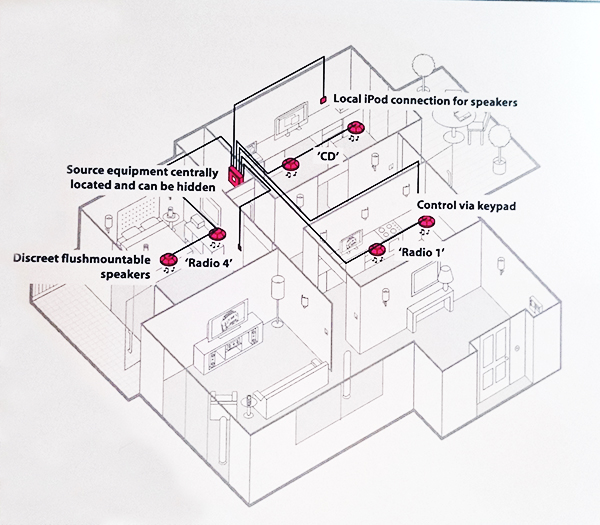
Source: Cedia Flyer
Other systems that can be incorporated into this central location are audio, audio visual, security and light. Audio and Audio Visual can be wired to this central location, allowing you to control the music & tv in multiple rooms from one remote (tablet). This can be paired with lighting, meaning that all lights, including side lamps, can be controlled from a tablet. Presets can be created, which include all aspects so you can create custom scenes, so there is no hassle of trying to create the perfect atmosphere for a dinner party. This is also a great way to overcome the 8 gang plates which can come about when creating sophisticated lighting design, and means that they can all be controlled without getting up off the sofa.
This would work well for the clients we are currently working with, as they have a number of different types of lighting in each room (cornice lighting, spot lights, pendant lights, standard lamps in the open plan living area alone). With the lights be operated through a combination of standard switches and dimmers, the 6 gang plates begin to look a little messy. Having a central control system/app for a tablet to control this could not only tidy up the switches creating a cleaner finish, but also enable them to create scenes suitable for the different activities/times of day, especially with having a young child, this could be extremely useful. Their daughter also loves music, and is always turning on their current sound system, which is very basic, so a more integrated system could really appeal to her.
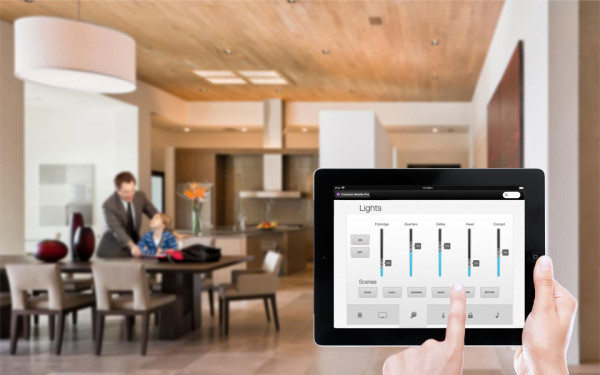
Source: Crestron
Finally, more recently, security systems are becoming popular in integrated homes. There are now security cameras and surveillance technology which can be viewed from a tablet and motion sensors can be installed throughout the home which all link back to this central location. This can also include ringers which include cameras, where you can view who is wishing to enter your home through the tablet rather than a small screen connected to the phone. Security would not be such an issue within the clients project we are working with, but is definitely something that we would look into in future projects, as it would be especially useful for clients who travel a lot, or use the house as a second home, so are not there for the majority of the time.
An example of a home ingrigration system pictured above is Creston, which offer a number of different ways of controlling home integration, through technology such as apps, tablets, panels and remotes. There are also so many products that nest can work with, one being ‘hue’ by philips which controls individual light bulbs. To see what else does, have a look here.
Integrated systems would work extremely well in this project, it is just very unfortunate that the underfloor heating is not compatible with nest, and so perhaps the most useful system cannot be installed. However, having everything wired back to a central location with a star connection will definitely be used, with the possibility of light & sound, depending on customer budget and choice.

